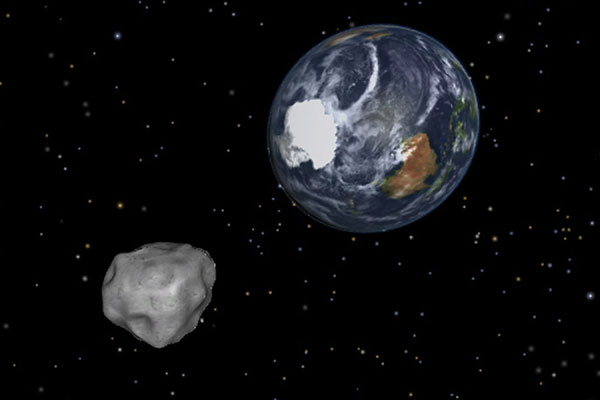 |
|
Someformer astronauts say they want to give the world a fighting chance, as the Earth is menaced by meteors. [Photo/Agencies] |
Scientists studying the terrifying meteor that exploded without warning over a Russian city last winter say the threat of space rocks smashing into Earth is bigger than they thought.
Meteors about the size of the one that streaked through the sky at 42,000 mph and burst over Chelyabinsk in February — and ones even larger and more dangerous — are probably four, five or even seven times more likely to hit the planet than scientists believed before the fireball, according to three studies published Wednesday in the journals Nature and Science.
That means about 20 million space rocks the size of the Chelyabinsk one may be zipping around the solar system, instead of 3 million, NASA scientist Paul Chodas said at a news conference.
Until Chelyabinsk, NASA had looked only for space rocks about 100 feet wide and bigger, figuring there was little danger below that.
This meteor was only 62 feet across but burst with the force of 40 Hiroshima-type atom bombs, scientists say. Its shock wave shattered thousands of windows, and its flash temporarily blinded 70 people and caused dozens of skin-peeling sunburns just after dawn in icy Russia. More than 1,600 people in all were injured.
Up until then, scientists had figured a meteor causing an airburst like that was a once-in-150-years event, based on how many space rocks have been identified in orbit. But one of the studies now says it is likely to happen once every 30 years or so, based on how often these things are actually hitting.
By readjusting how often these rocks strike and how damaging even small ones can be, "those two things together can increase the risk by an order of magnitude," said Mark Boslough, a Sandia National Lab physicist, co-author of one of the studies.
Lindley Johnson, manager of NASA's Near Earth Object program, which scans the heavens for dangerous objects, said the space agency is reassessing what size rocks to look for and how often they are likely to hit.
In addition, NASA this fall reactivated a dormant orbiting telescope called WISE specifically to hunt for asteroids, Johnson said. And the agency is expanding ground-based sky searches.
At the same time, NASA and the Federal Emergency Management Agency are looking into the need for evacuations in the case of an asteroid headed for Earth and how to keep the public informed without scaring people.
Those issues came up after the two agencies quietly held a disaster drill last spring in Washington that was meant to simulate what would happen if a space rock slightly bigger than the Chelyabinsk one threatened the East Coast.
During the drill, when it looked as if the meteor would hit just outside the nation's capital, experts predicted 78,000 people could die. But when the mock meteor ended up in the ocean, the fake damage featured a 49-foot tsunami and shortages of supplies along the East Coast, according to an after-action report obtained by The Associated Press.
|
|
|
|
|
|
|
|
